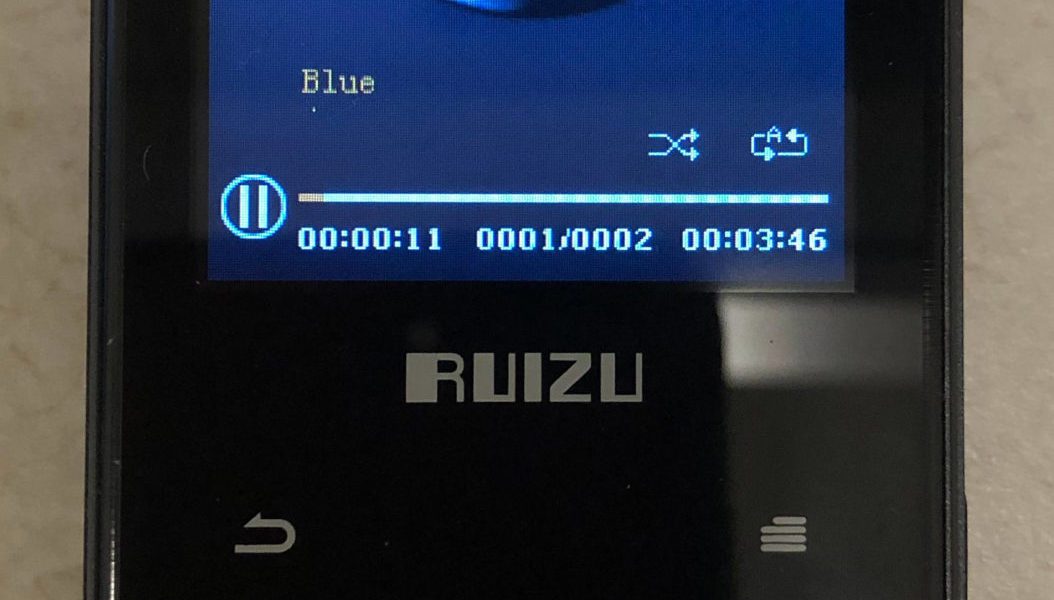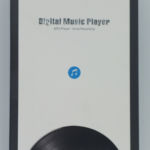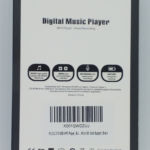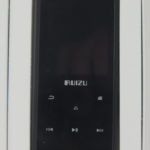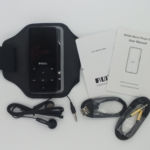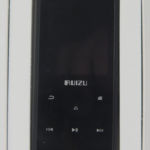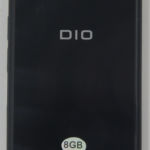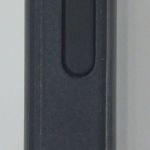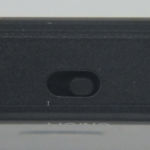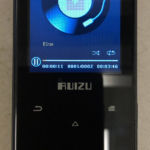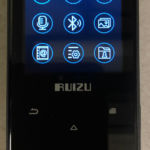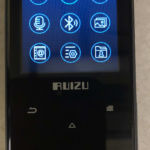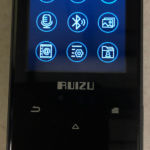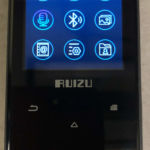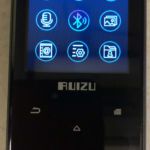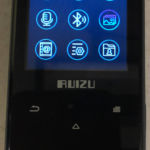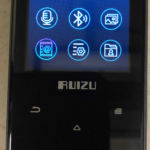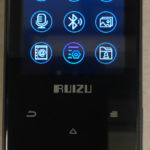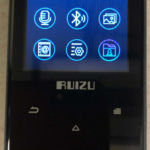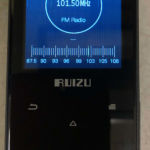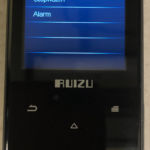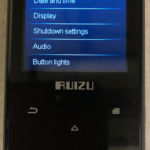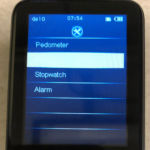Ruizu D10 DAP
I was recently asked by Sunny if I had an interest in reviewing the new Ruizu DAP models and after a brief discussion, she provided a coupon to purchase the 8gb model of the D10 at a substantial discount. Thanks to Sunny and Ruizu for providing the D10 for review. I have previously reviewed the Ruizu X50 DAP which resembles the little Sansa models of old. The D10 in this review looks a bit more like an I-pod or 1st gen Fiio X1.
Unboxing/Packaging:
Packaging is uneventful with the player housed in foam tray and well protected for transit. The kit is really quite good as it includes the player, a USB cable, a 3.5 male to male cable for connecting to a vehicle, an arm-pouch for runners, and a surprisingly good set of earbud style in-ears. Everything you need to use it is ready as it comes out of the box. Just load your music and go. Mine even came charged to nearly 100% out of the box directly from Amazon so I have to think it wasn’t cherry-picked to do so.
Build:
Build quality is good with aluminum alloy frame and glass face and rear. Heft is good and it feels solid even with a relatively light weight of just under 4oz with a micro-sd installed. Buttons and ports are well centered in the cuts and level with the frame for the usb and 3.5 port. The only knock on the build is that light can be seen around the volume buttons on the side when the player is in use. I don’t think this impacts function at all, but it does distract from an otherwise very clean look. The power button is on the bottom between the USB charging and loading port and the 3.5mm TRS port. Volume buttons are on the right hand side as is the micro-sd card slot. the left side and top are both slick as is the rear (excepting a cutout at the top for the built in mics and speaker). For this reason when recording the unit should be placed face down or on its side.
Internals:
The D10 doesn’t list what CPU or DAC chip is used. Options of either 8gb or 16gb internal storage are available and both have the option for use of a micro-sd card. Official specs say the player supports up to 128gb cards but my test sample had no problem reading 256gb or 400gb cards so at least some larger cards will work. Of course without being officially supported, your mileage may vary.
Controls/UI:
I could write a novel in this space regarding the controls because the D10 is a bit schizophrenic. It is primarily a music player, but also supports FM radio, E-book, voice recording, picture and video viewing, pedometer, stop watch, and alarm clock functions. The menu photos below give an idea of all the functions of the D10. For the sake of brevity, we will be looking at the audio functions only in this review.
I’ll start with the music icon on top left in the menu. When clicked we are presented with options for now playing, choose by title, artist, album, genre, or playlist. At the bottom of the list is the choice of internal storage or card storage. For this reason I tested with music copied to the internal in one pass and card storage in a second since they will not mix or shuffle both by default. Once playback is initiated, the top right button can be used to lock and unlock the player to prevent changing songs while the player is in a pocket.
Next up is the FM radio (Button is top right). The radio requires the use of headphones as it uses the wire as the antenna. I found it would not receive any signal unless I had some kind of earphone plugged in. The radio offers to automatically tune stations or to let the user manually select a frequency. I found the radio worked well with stations that were fairly close but struggled to pickup more distant ones due to its lack of a more functional antenna. This may be a feature some appreciate for sporting events where it would make it possible to keep up with other scores or listen to announcers while at the game.
The Settings only provides two options for audio. One to set a volume limit and the other to enable or disable the onboard speaker. Lastly the Folder view allows for sorting the local storage or card storage and playing your choices directly from folder view.
One issue I did run across is that the highlight that allows you to select an option actually obscures the option name at times. If viewed from directly above, the name is visible against the yellow background, if viewed at any angle at all, you get the same look the camera shows and the name disappears and appears to be a solid yellow bar. An option to change to a higher contrast color would help alleviate this and make the player easier to read in bright outdoor situations.
From the now playing screen, you have access to the play mode settings (shuffle, repeat) and the EQ and variable speed playback settings by pressing the top right button.
Connectivity:
The Center button is the Bluetooth controls. Bluetooth is off by default and must be enabled and then paired to use wireless headphones. Both of these processes are accomplished in a few clicks and I had no issue with pairing and using several different wireless headphones with the D10. Bluetooth version is 4.1 so it does not support AptX. I found travel distance to be roughly 15 meters from the source before I started losing connectivity. Within that perimeter I had no trouble with cut-outs or loss of signal.
Battery Life:
Ruizu advertises up to 48 hours of music playback and I found that to be a reasonable approximation as I got 45 and 47 hours out of it the two times I tested this. Charging time is listed as 2 hours and I found with a standard Samsung S8 charger it took closer to 3 than 2 but still well within acceptable performance limits. A USB cable is provided, but no guidance on the supported amperage is provided. When I tested using a USB voltmeter current never drew at a rate higher than 500mA so I assume a standard USB charging circuit that would not benefit from a high amperage charger.
Sound:
Formats supported are pretty standard for a consumer player. No DSD or ALAC support, but this shouldn’t be expected at a price point of $35. Mp3, WMA, WAV, APE, and FLAC are supported. For APE and FLAC, I did find that the player fails to play files recorded at a 24bit depth but had no problem with 16bit. Again, probably of little concern to the target audience but something to keep in mind if you have a lot of I-tunes files or high-res flac files to play.
The sound is fairly neutral with a little push of the mid-bass. A 5 band EQ has several presets and also allows for customization of the sound to the users liking rather than using presets. there is no option to save multiple custom settings so some jockeying with the EQ between albums may be needed.
Detail level is good, but not fantastic with very limited micro-detail. Again, considering the target audience, mp3s are reproduced well and most will not realize what is missing unless they are used to a premier grade player.
The biggest weakness of the D10 is that output power is very limited and playback suffers as impedance goes up or sensitivity goes down. The D10 is most at home with high sensitivity in-ears of 16Ω or less. 32Ω models can work well if sensitivity is high enough, but 50Ω models really begin to tax the output of the D10 and notable heat is generated when used for extended periods.
Conclusions:
It would be simple to dub this a non-audiophile grade player and pick on its shortcomings, but it wasn’t ever intended to be a high end player, it was intended to be a pocket mp3 player for the masses. In that role it excels. It works well, is small and dissappears in a pocket. It is easy to use playlists or just set it to random play and listen. Unlike most high-end players that can barely make it through a work day on a charge the D10 can make it the entire week. This is exactly the kind of player I would take jogging, camping, etc. Don’t expect miracles, and use 16Ω high sensitivity in-ears or earbuds and you should get good service out of the D10 for quite awhile. For teens or those particularly rough on your gear, the D10 is fairly durable, but worst case you are only out ~30USD if you were to have to purchase a replacement. Ruizu makes several players in this class, but the D10 offers perhaps the most complete feature set of any of their current offerings. For non-audio gear friends, these may a great alternative to a phone as a music player.
-
Packaging - 5/105/10
-
Accessories - 8/108/10
-
Build Quality - 6/106/10
-
Sound Quality - 5/105/10
-
Battery Life - 9/109/10
-
Connectivity - 5/105/10
-
Ui - 5/105/10
Summary
Pros – good sound quality, Micro-SD support, and long battery life.
Cons – Menus could be better optimized, on-board speaker is tinny, output power is very limited.

